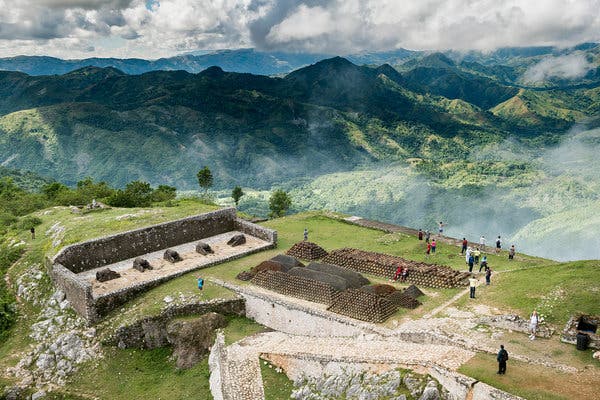
On Tuesday, the 12th of January 2010 at exactly 16:53 local time, a magnitude 7 earthquake rocked the country of Haiti. The initial quake lasted for about thirty seconds, with aftershocks that continued for weeks afterward, ultimately leaving between 100,000 and 200,000 dead, nearly 300,000 buildings destroyed and around $8 billion in damages. For reference, the country’s total GDP at this time was around $6.6 billion.
Reconstruction efforts have taken years, with thousands still effectively living as internal refugees with no homes to return to. Infrastructure was demolished, a major cholera outbreak occurred and other natural disasters such as 2016’s Hurricane Matthew, causing a further estimated $2.8 billion in damages, have plagued Haiti since then. Modern Haiti has in many ways been forced to grow out of the shadow of this disaster, with government inaction leading to mass protests and even nostalgia for the old era of Papa Doc and Baby Doc. In many ways, the earthquake and everything since has been a catalyst for the mass protests that have plagued Haiti since the 7th of July 2018 up until the time of this article.
So yeah, it’s safe to say that this earthquake was an absolute catastrophe that destroyed countless lives and will no doubt continue to affect Haiti for years to come. But as you might be aware, this is a tourism website. What does all of this have to do with intents to travel to Haiti? Well, I’ll tell you.
Pre-Haiti Earthquake Tourism

For decades, Haiti had been embroiled in the near-constant civil war, endemic poverty and dictatorial regimes that effectively killed any potential Haiti had for tourism. Renewed political stability had led to the first signs of foreign investment, the building of new hotels and the growth of tourist hotspots in the country. Things were looking up! It certainly made sense, Haiti was in a prime tourist destination. Travelers from the US wouldn’t need to travel very far and the lack of pre-existing tourism could have been their strong-point. People would be able to find comparatively untouched beaches and cities full of unique architecture, as of yet untouched by the gentrifying hands of the markets. If all worked well, a cyclical relationship would have hit Haiti and as tourists arrived, the economy improved, thus attracting more tourists!
This was not to be the case, unfortunately. Even before the Haiti earthquake, Haiti had a lot more to improve on. Despite being on the same island as the Dominican Republic, 2008 recorded almost 4 million visitors there compared to 800,000 to Haiti, with most only arriving as brief stops on a cruise. With things like Venezuela promising to help develop a second international airport in the north of the country and the likes of US ex-president Clinton acting as a tourism ambassador to the country, it really did seem like things were going to improve soon.
So… What did happen to tourism in the end?
Post-Haiti Earthquake Tourism

Well, here’s the good news at least. That aforementioned international airport? It was eventually built, finished by 2013. In fact, many plans for the country managed to go on as normal, because the bulk of carnage to the country was centralized on the city of Port-au-Prince. Planned development outside of these heavily damaged regions was able to proceed largely uninhibited and the massive international reconstruction effort played a big part in restoring things comparatively quickly. The international airport in Port-au-Prince had been partially demolished by the earthquake, but the need to ship resources to and from the country resulted in it being returned to use within days, albeit with diminished capacity.
Rather remarkably, it can be said that the Haiti earthquake did not destroy tourism to the country, rather it temporarily diminished it. In 2009, the tourist numbers to Haiti are estimated at around 387,000. In 2010, the number was 255,000. That’s hardly a total collapse, no doubt owing to the swiftness of essential reconstruction in the early part of the year and the prominence of cruise tourism which could avoid the international airport at Port-au-Prince. Tourism rose again to 349,000 the following year with roughly the same in 2012 before jumping to 420,000 in 2013. Even though reconstruction was still ongoing in this period, it’s clear that tourism had been restored in other necessary regions. Some estimates are by the middle of the decade, there had been a roughly 10% increase in tourism per annum as a result of government initiatives to encourage more tourism.
If you’re at all interested in adding to Haiti’s tourist numbers, you should join us on our upcoming trip!





